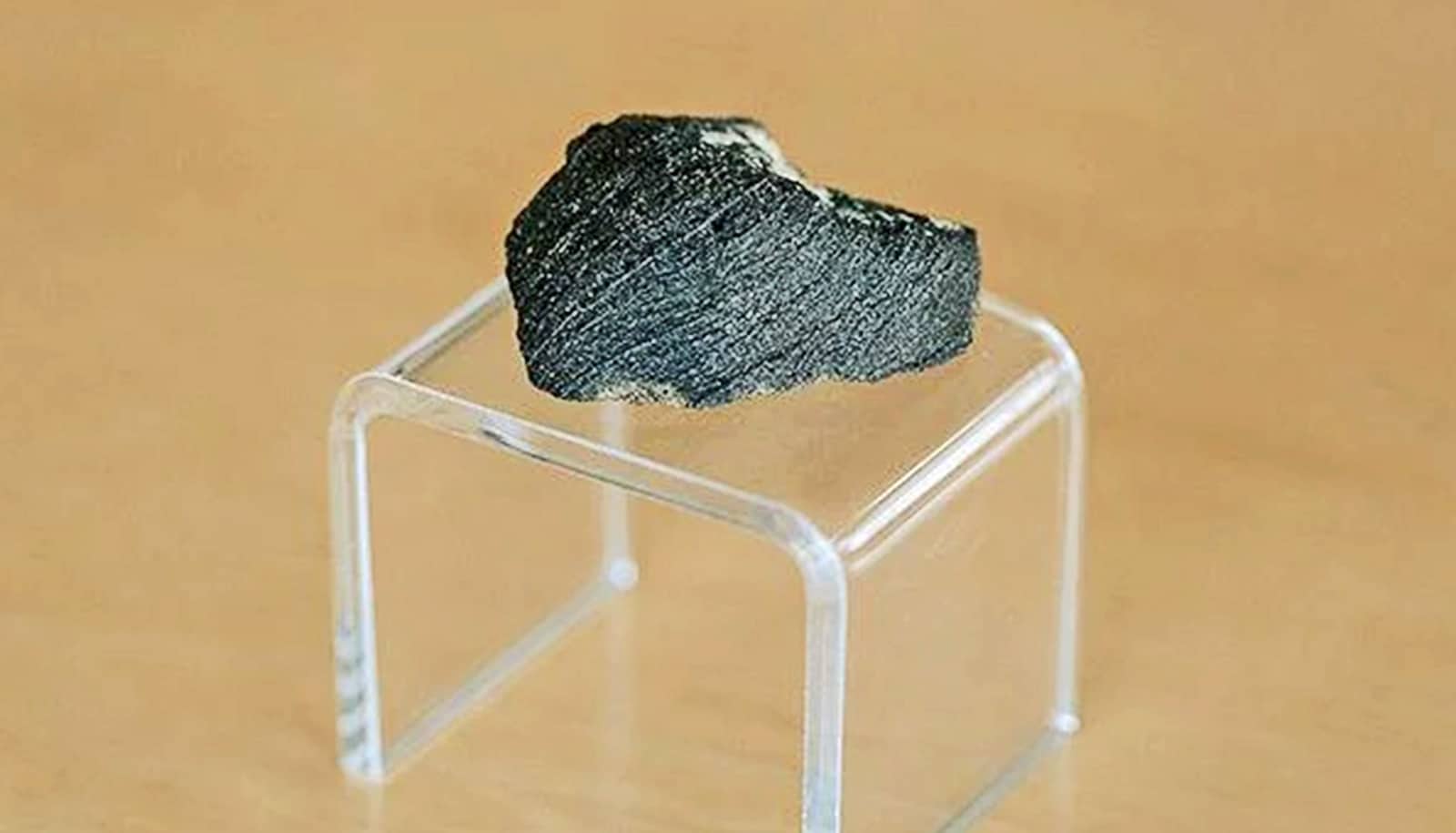The two hemispheres of Mars are dramatically different from each other—a characteristic not seen on any other planet in our solar system.
Non-volcanic, flat lowlands characterize the northern hemisphere, while highlands punctuated by countless volcanoes extend across the southern hemisphere.
Scientists can’t agree on what caused the differences, but ETH Zurich geophysicist Giovanni Leone is offering a new explanation.
Leone and colleagues have concluded that a large celestial object must have smashed into the Martian south pole in the early history of the solar system. Their computer simulation shows that this impact generated so much energy that it created a magma ocean, which would have extended across what is today’s southern hemisphere.
Crust like a crème brûlée
The celestial body that struck Mars must have been at least one-tenth the mass of Mars to unleash enough energy to create this magma ocean. The molten rock eventually solidified into the mountainous highlands that today comprise the southern hemisphere of Mars.
In their simulation, the researchers assumed:
- The celestial body consisted to a large degree of iron
- It had a radius of at least 1,600 kilometers (994 miles)
- It crashed into Mars at a speed of five kilometers/second (three miles/second).
They estimated the event occurred around 4 to 15 million years after Mars formed. The planet’s crust must have been very thin at that time, like the hard, caramelized surface of a crème brûlée. And, just like the popular dessert, hiding beneath the surface was a liquid interior.
When the celestial object hit, it added more mass to Mars, particularly iron. But the simulation also found that it triggered strong volcanic activity. Around the equator in particular, numerous mantle plumes were generated as a consequence of the impact, which migrated to the south pole where they ended. Mantle plumes are magma columns that transport liquid material from the mantle to the surface.
Are other theories wrong?
In the model, the researchers found that activity on Mars died down around 3.5 billion years ago, after which time the Red Planet experienced neither volcanic activity nor a magnetic field—this is consistent with observations and measurements.
Earlier theories posited the opposite, namely that there must have been a gigantic impact or many smaller strikes against the northern hemisphere. The most important theory about the origin of the Mars dichotomy was formulated by two American researchers in 1984 in an article in the journal Nature.
They postulated that a large celestial object struck the Martian north pole. In 2008 a different team revived this idea and published it once again in Nature.
This theory did not convince Leone: “Our scenarios more closely reflect a range of observations about Mars than the theory of a northern hemisphere impact,” states Leone.
The volcanoes on Mars are very unevenly distributed: they are common and widespread on the southern hemisphere, but are rare and limited to only a few small regions in the northern hemisphere.
“Our model is an almost identical depiction of the actual distribution of volcanic identity,” asserts Leone. According to the researcher, no other model has been able to portray or explain this distribution before.
“Our simulation was also able to reproduce the different topographies of the two hemispheres in an nearly realistic manner.”
And he goes on to explain that the model—depending on the composition of the impact body chosen—is a virtually perfect representation of the size and shape of the hemispheres.
One condition, however, is that the celestial body impacting Mars consist of 80 percent iron; when the researchers simulated the impact with a celestial body made of pure silicate rock, the resulting image did not correspond to the reality of the dichotomy.
Too hostile for water or life?
Lastly, the model developed by the ETH researchers confirmed the date on which the magnetic field on Mars ceased to exist. The date calculated by the model corresponds to around 4.1 billion years ago, a figure previously proven by other scientists.
The model also demonstrates why it ceased: a sharp decrease in heat flow from the core into the mantle and the crust in the first 400 million years after the impact. After a billion years, the heat flow was only one-tenth its initial value, which was too low to maintain even the volcanism.
[related]
The model’s calculations closely match previous calculations and mineralogical explorations.
The volcanic activity is related to the heat flow, explains Leone, though the degree of volcanic activity could be varied in the simulation and influenced by the strength of the impact.
This, he states, is in turn linked to the size and composition of the celestial object. In other words, the larger it is, the stronger the volcanic activity is.
Nevertheless, after one billion years the volcanic vents were extinguished—regardless of the size of the impact.
It has become increasingly clear to Leone that Mars has always been an extremely hostile planet, and he considers it almost impossible that it ever had oceans or even rivers of water.
“Before becoming the cold and dry desert of today, this planet was characterized by intense heat and volcanic activity, which would have evaporated any possible water and made the emergence of life highly unlikely.”
The study appears in the journal Geophysical Research Letters.
Source: ETH Zurich


